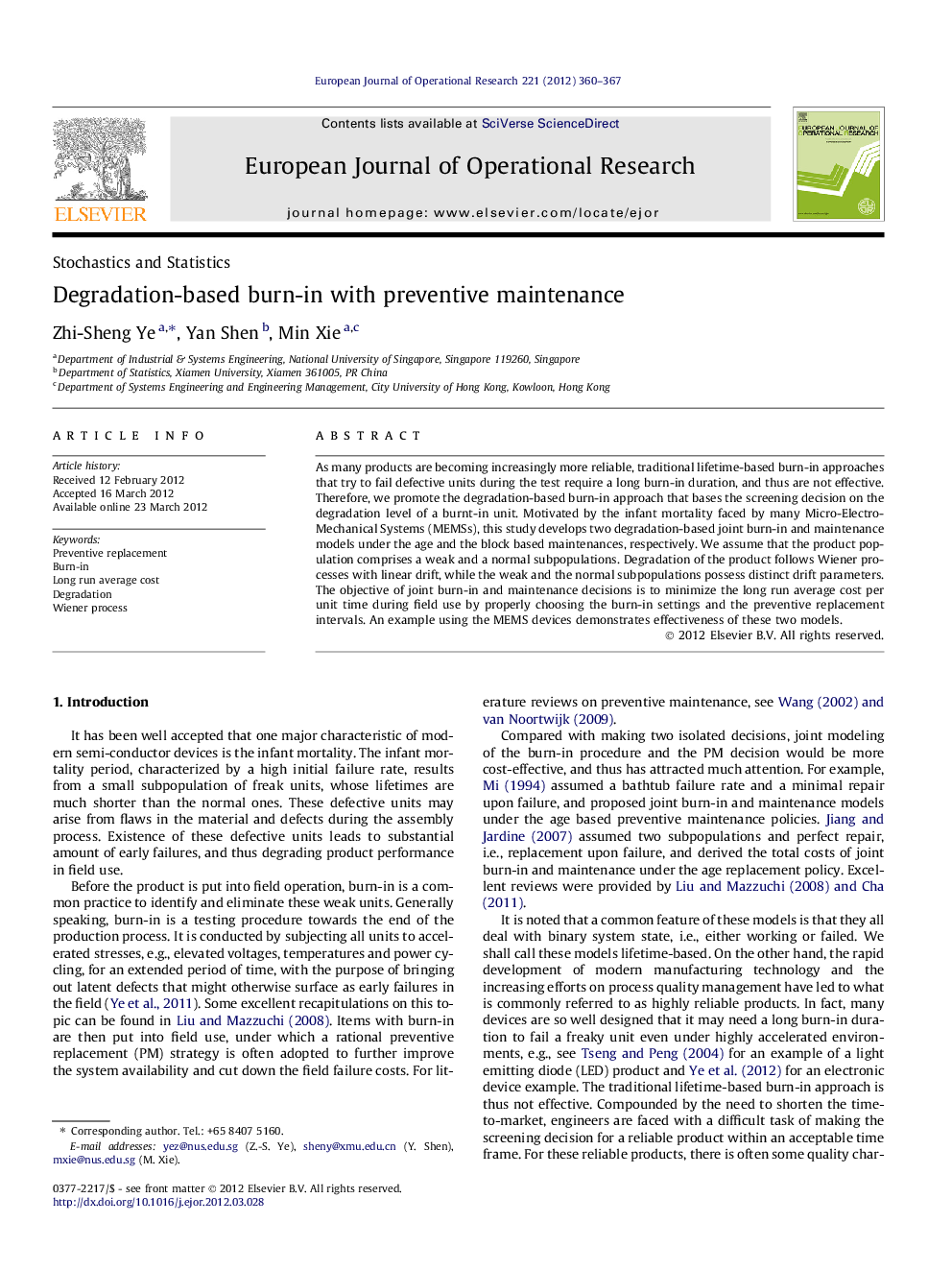| Article ID | Journal | Published Year | Pages | File Type |
|---|---|---|---|---|
| 481386 | European Journal of Operational Research | 2012 | 8 Pages |
As many products are becoming increasingly more reliable, traditional lifetime-based burn-in approaches that try to fail defective units during the test require a long burn-in duration, and thus are not effective. Therefore, we promote the degradation-based burn-in approach that bases the screening decision on the degradation level of a burnt-in unit. Motivated by the infant mortality faced by many Micro-Electro-Mechanical Systems (MEMSs), this study develops two degradation-based joint burn-in and maintenance models under the age and the block based maintenances, respectively. We assume that the product population comprises a weak and a normal subpopulations. Degradation of the product follows Wiener processes with linear drift, while the weak and the normal subpopulations possess distinct drift parameters. The objective of joint burn-in and maintenance decisions is to minimize the long run average cost per unit time during field use by properly choosing the burn-in settings and the preventive replacement intervals. An example using the MEMS devices demonstrates effectiveness of these two models.
► Motivated by MEMS, we develop two degradation-based burn-in maintenance models. ► The average cost per unit time for each model is derived. ► A procedure is developed to numerically evaluate the cost function. ► We show that degradation-based burn-in requires much less burn-in time. ► These models are potentially very important for other reliable products.
